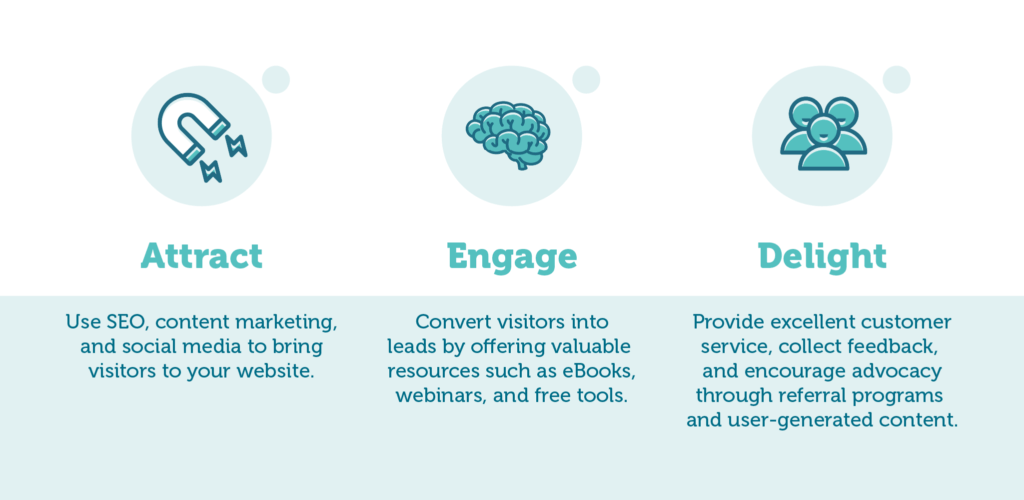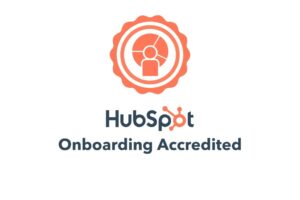8 Tactics for Creating an Effective Inbound Marketing Strategy In 2025

What is Inbound Marketing?
Inbound marketing is a strategy focused on growing a business by fostering meaningful, long-term relationships with its customers. It benefits both: customers receive more personalised and relevant content and interactions, while businesses can attract their target audience, build lasting relationships, and create brand advocates. When balanced with calculated outbound marketing efforts, it can generate some truly powerful results.
Inbound marketing is a concept pioneered by Hubspot, which has become massively popular and for good reason. According to Hubspot, Inbound marketing costs 62% less per lead than traditional outbound marketing methods. Whew! This means that the potential impact of inbound marketing tactics can no longer be ignored! So in this article, we will go into detail on all things inbound marketing including:
- The Three Phases of Inbound Marketing
- Key Trends in Inbound Marketing for 2025
- 8 Tactics for Creating an Effective Inbound Marketing Strategy
- Where to Begin With an Inbound Marketing Strategy in 2025
- FAQs
So like a dolphin, let's dive in!
The Three Phases of Inbound Marketing
Inbound marketing is a straightforward concept, but it can be explored in as much detail as you’d like. Think of it like an iceberg, what’s visible on the surface is just the beginning, with much more beneath the surface waiting to be discovered. But to get started, let’s break it down into three simple stages: ‘attract,’ ‘engage,’ and ‘delight.’ These stages form the foundation of inbound marketing and are easy to follow, but there’s a whole lot more beneath them that you can dive into as your strategy evolves.

5 Key Trends in Inbound Marketing for 2025
1. AI-Driven Content Personalisation
AI is revolutionising inbound marketing by enabling new levels of hyper-personalisation for customer interactions. AI-powered tools will analyse user behaviour and deliver customised content experiences, improving engagement and conversion rates. A simple way to look at this is with YouTube. Whenever you watch a video, the AI behind the scenes will curate and adapt the content that it shares with you. This can also be found on TikTok with the ‘For You’ page. The goal is to offer a consistent supply of relevant content and keep you engaged for longer.
2. Voice Search Optimisation
Voice search is all the rage and will continue to grow as smarter solutions come to the forefront. (I’m personally looking forward to a high-quality reminder/note-taking app for those on the road thoughts!) With the rise of smart speakers and voice assistants, optimising content for voice search is crucial. Use conversational keywords and structured data to ensure your website appears in voice search results.
3. Interactive and Immersive Content
Consumers are increasingly engaging with interactive content such as quizzes, calculators, and augmented reality (AR) experiences. These formats boost engagement and encourage users to spend more time on your website. These are such a great way to stand out and create an experience that is unique to your business. A popular example of this is Spotify Wrapped. This yearly ritual keeps users engaged, and active on Spotify, whilst becoming a huge talking point every November/December when it is released. It is important to make sure these experiences are authentic however as many brands jumped on that trend and it did not have the same effect!
4. Video and Short-Form Content
Platforms like TikTok, Instagram Reels, and YouTube Shorts are driving demand for short, engaging video content. We all want the short over a 10-minute video these days, particularly for questions that just need a simple answer. Businesses should leverage video marketing to explain products, share customer stories, and showcase behind-the-scenes insights. UGC can be great for helping to solve customer pain points and finding ideas for new features and services that you can offer, as well as being free promotion for your business.
5. First-Party Data and Privacy First Marketing
With increasing data privacy regulations including GDPR, relying on first-party data (collected directly from customers) is essential. Brands should focus on building trust through transparent data practices and offering valuable incentives for data sharing. Customers want the balance of a personalised experience with minimal invasiveness and data collection. A tough balance to strike but one that the best brands are utilising.
So... now that you know about the key trends, let's look at how to build a great inbound marketing strategy that will take your business's digital marketing to the next level.
8 Tactics for Creating an Effective Inbound Marketing Strategy
SEO, Valuable content and Blended Search
SEO is the backbone of inbound marketing and a solid content marketing strategy goes hand in hand with this. Create relevant and engaging articles and landing pages to attract your target audience. It is a strategy that is tried and tested. However, SEO in 2025 requires a shift to focus on what we call here at Aira ‘Blended Search’. Search engine results pages (SERPs) are evolving and now display a variety of results including images, videos, news articles, maps and AI summaries. Blended search takes all of these factors into account and aims to rank for image, video, and news results as well as typical search results. This will involve optimising image alt tags, videos, and news articles for relevant keywords.
Use Video!
Video isn’t optional, it’s essential for creating those deeper connections with your audience. In fact, businesses that use video marketing generate 66% more qualified leads. Short-form videos, product demos, and behind-the-scenes content are all great ways to connect with your audience. Don’t overlook the power of platforms like YouTube, Instagram, and LinkedIn for driving traffic and engagement. It could be something as simple as a short-form video explaining exactly what a product does, or a long-form video/podcast that goes further in-depth on examples and real-world applications for your product.
Personalisation and Data-Driven Insights
Personalisation is key in today’s crowded market. Using data analytics to segment your audience and tailor content to their preferences helps increase conversion rates and builds stronger relationships. A CRM platform is an example of a powerful inbound marketing tool that can track your leads' journeys and deliver personalised experiences. Work to bring your company's data such as contact lists, into one neat application and see how much simpler your marketing, sales and customer service efforts will be.
Optimise Your Lead Nurturing Process
Inbound marketing isn’t just about attracting leads; it’s about nurturing them through the buyer’s journey. Marketing automation tools can help you send targeted content based on where prospects are in the sales funnel, increasing the likelihood of a conversion. Email campaigns, drip feeds, and retargeting ads are excellent tactics here. This means you do not need to handhold each customer through the sales process, freeing up more time for your sales teams to assist customers at the end of the funnel.
Focus on ROI
Prioritise your ROI by focusing on metrics like cost-per-lead (CPL), customer lifetime value (CLTV), and conversion rates to measure the effectiveness of your inbound efforts. The beauty of inbound is that it’s easy to track, so you can demonstrate clear results to stakeholders. This is especially easy with dedicated CRM software which stores all of this information and tracks individual customers and how they engage with your brand.
Interactive Content
Interactive content, like quizzes, surveys, and polls not only engages users but also generates valuable data for your strategy. It’s an effective way to increase time on site and gather insights into your customers’ preferences, which can fuel further personalisation. Your customers want to get involved and be a part of your brand's story, give them an interactive experience that they will remember!
Diversify Your Marketing Channels
While blogging and SEO will always be foundational, don’t overlook emerging channels. Voice search, podcasts, and social commerce are all gaining traction in 2025. Test new platforms, but ensure they align with your brand and audience to avoid spreading yourself too thin. Remember an important part of any successful inbound marketing campaign is balance.
Optimise for Mobile
With more than half of all web traffic coming from mobile devices, your inbound strategy must be mobile-friendly. Whether it’s your website, email campaigns, or video content, ensure that everything is optimised for mobile viewing to enhance the user experience. Focus on content that balances images, aesthetics, content quality and loading speed. It is a delicate balance but one that you need to strike to even keep up with the competition these days!
So... Where Should You Begin With Implementing an Inbound Marketing Strategy?
Inbound marketing in 2025 requires businesses to stay ahead of trends and leverage innovative strategies to attract customers and retain them. By implementing relevant SEO-optimised content and blended search tactics, AI-driven personalisation, video, and mobile-friendly content you will be well on your way to an effective inbound marketing strategy.
Here at Aira we live and breathe inbound marketing as a Hubspot premium partner with expertise across industries including eCommerce, SaaS, health, finance, automotive, and professional services. We offer bespoke SEO, Paid media, CRM and Analytics, and Digital PR services. If you fancy a chat to see what your business needs to boost its inbound marketing efforts feel free to contact us today.




